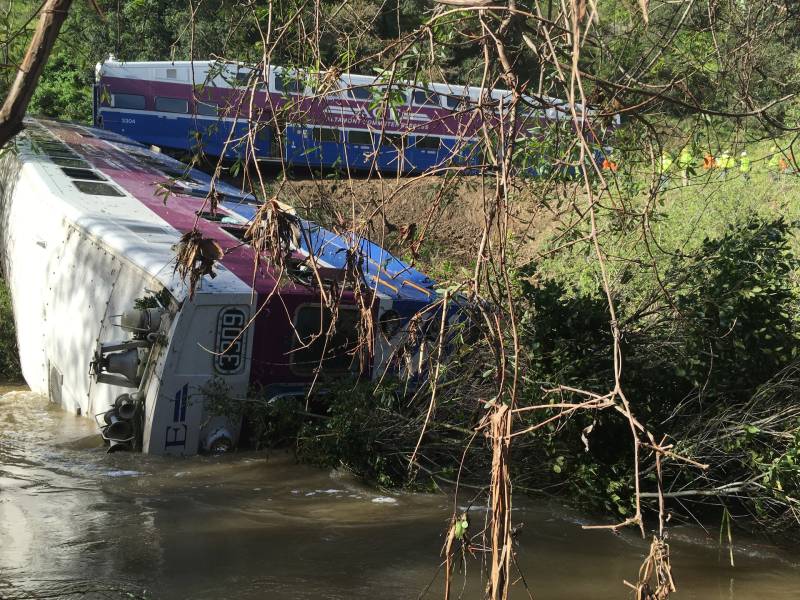Passenger Kathy Heilmann said that when the train came to a stopped, “it felt to me like the conductor slammed on the brakes, and then a moment later we hit something. So it was an abrupt stop. The train jerked back and forth quite a bit and I noticed almost immediately the smell of eucalyptus, like it was freshly cut. I later recognized that was from the trees that we plowed through.”
John Wong, a passenger who was headed home to Pleasanton, said he was dozing on the train’s last car, but was jolted awake by a sudden stop. He said it wasn’t clear what the trouble was until first responders entered the car.
“Everybody was just wondering what was going on, then one paramedic and one firefighter came on board to check if everyone was OK,” Wong said. After another half hour, passengers were allowed to detrain, then walk back along the tracks where they waited for the buses to Pleasanton.
“I’ll be back on that train as soon as it’s running,” Wong said. But it’s not exactly clear yet how long that will be.
Union Pacific said crews will be working throughout Tuesday and possibly into Wednesday to clear the tracks and make sure they’re safe to travel.
The main challenge, railroad spokesman Francisco Castillo said, is the terrain at the accident site and the position of the car that toppled off the tracks.
“It’s down the creek, it’s about 50 feet away from the track,” Castillo said. “It’s pretty steep. That’s only one car that’s down the creek and then the other four remain at the top on the tracks with one of them derailed.”
Inspectors for the California Public Utilities Commission are on the scene. The National Transportation Safety Board said it was monitoring the situation but as of Tuesday morning had not dispatched a team to look at the crash site.
The Altamont Corridor Express began service in 1998 and runs four round trips each weekday between Stockton and San Jose. Ridership on the service was estimated to have been at 1.2 million annual trips in 2014.
